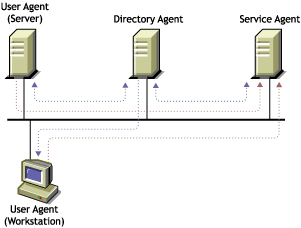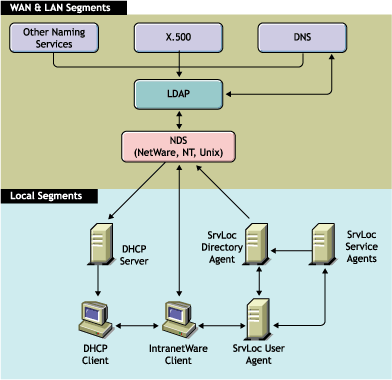1.14 How SLP Works
The following figure illustrates how SLP registers a service provider on a local segment. Each agent must register its own services. Whether the User agent is on the server or on a workstation, it can register as a client after it communicates with the Directory agent to see what services are available. Once the service is registered with the Directory agent or Service agent, you can register or deregister the service.
Figure 1-1 Service Location Protocol

Once the application has registered with the SLP User agent, it can look up a service or get a list of services and read the attributes of a service, using either blocking calls or synchronous calls. In the IP environment, this information is pulled out of the Directory agent and put into NDS so that users and administrators can know what services are available in a local area, provided the proper security rights are granted.
A Novell client can use the User agent to go into an SLP Directory agent or Service agent, or into NDS to reach out to other LAN or WAN segments, as shown in Figure 1-2.
This method does not rely on service information obtained from routers. Instead, NDS is used for global communication of information. Through this method, service updates on local segments are just as reliable and dynamic as on IPX SAP-based networks.
Figure 1-2 Integrated Network Services Discovery
